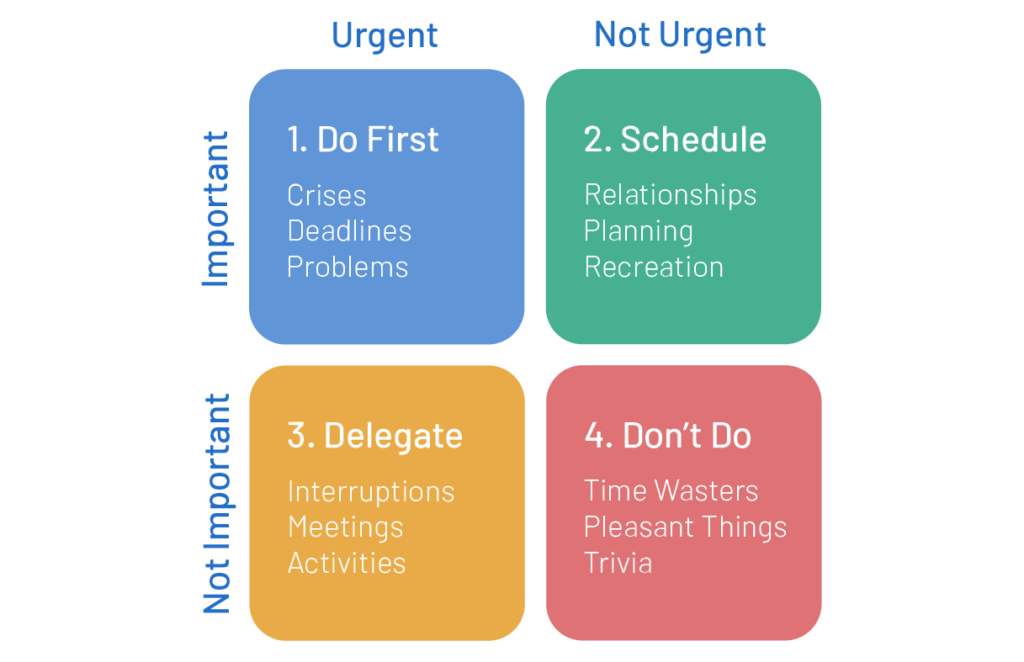Unlocking Success and Well-Being Through Effective Time Utilization
Every human being on this planet has been blessed with innumerable gifts from the Creator, the Almighty. To name a few: life, health, sight, limbs, lungs, the ability to speak and walk, intellect, thought power, a home, family, money, status, dignity, and time. These gifts are countless and invaluable, each crucial to our existence. Each endowment is bestowed differently upon individuals—some receive more, some less. Among all these blessings, time stands out as an exceptionally precious gift given equally to everyone. One’s success or failure in life largely hinges on how one utilizes the resources at their disposal. Similarly, success is significantly influenced by how one manages their time. Time is one of the most critical resources, and mastering Time Management is undoubtedly the most essential skill.
So, what do we mean by Time Management? Time Management is the process of organizing and planning how to divide your time between specific activities. It involves making conscious decisions about which tasks to prioritize, how much time to allocate to each task, and when to perform them to maximize efficiency and productivity. Effective Time Management enables individuals to accomplish more in less time, leading to greater productivity, reduced stress, and improved overall well-being. It is undoubtedly one of the most essential skills for achieving personal and professional success.
When we delve into the lives of great leaders and highly successful individuals, both past and present, one common trait stands out: their exceptional efficiency in managing time. For example, Apple CEO Tim Cook starts his day at around 3:45 am, utilizing the early morning hours for productivity. Microsoft co-founder Bill Gates organizes his day into four segments, dedicating 25% of his workday to each. Amazon founder Jeff Bezos employs a unique time management strategy by starting his meetings at 10 am, allowing himself a relaxed morning to boost productivity. He also implements the “The 2 Pizza Rule,” keeping team sizes small enough to be fed by two pizzas, ensuring focused and efficient collaboration. These are just a few of the countless examples of how renowned and highly successful people master time management to enhance their productivity and success.
When we discuss Time Management, we are not restricting it to managing tasks at work only. Time Management is not just about work; it’s about life. It’s about balancing professional responsibilities with personal well-being and leisure. It’s about doing more in your life, both personally and professionally, without feeling overwhelmed. These renowned individuals show us that mastering Time Management can lead to greater productivity, success, and overall life satisfaction. They inspire us to achieve a balanced and fulfilling life.
Whenever I meet people from various backgrounds and professions, one common issue emerges: the increasing and unmet demands on their time. Many express a desire to achieve more in both their personal and professional lives but struggle with time management. They often complain about productivity, meeting deadlines, and accomplishing tasks. Additionally, they lament their inability to spend quality time with their children, spouses, and other family members. Conversely, their bosses perceive them as unfocused and unproductive, unable to fulfill their commitments. This issue appears to be endemic worldwide. As a result, stress and anxiety levels are rising, relationships are becoming strained, and professional growth is stagnating.
How can we address this ever-increasing challenge of managing time effectively? There is an abundance of literature on the subject—innumerable articles, blogs, countless books, and tools, both offline and online. During my research, I encountered so much content that I ended up confused and overwhelmed. Therefore, my approach here is to present a simple yet powerful methodology to help you develop and master your time management skills.
In an effective Time Management process, the secret lies in prioritizing your tasks, whether professional or personal. Quite often, we fail to categorize tasks based on their importance and urgency, which is the essence of prioritization. We are all heavily loaded with tasks and goals—important, urgent, routine, daily chores, and more. Each demands our attention and energy, and they all seem equally important and urgent. As a result, we try to complete all of them within their stipulated deadlines, but the reality is that we often fail to finish any on time. This is why having the right time management strategy in place is crucial. The prolific writer on productivity and energy management, Tony Schwartz has rightly said, ‘When we are faced with urgent tasks, our reactive brain steps in. We rush doing them without much thought. The sense of accomplishment makes us feel extremely good. This can evolve into a real ‘urgency addiction.’
We will stick to Covey’s Time Management Matrix in our discussion.
Stephen Covey’s Time Management Matrix is a powerful tool for prioritizing tasks based on their urgency and importance. The matrix is divided into four quadrants:
- Quadrant 1 (Urgent and Important): Tasks that require immediate attention and are crucial. These include crises, emergencies, and pressing deadlines.
- Quadrant 2 (Not Urgent but Important): Tasks that are important for achieving long-term goals but do not need immediate attention. Examples include planning, relationship-building, and personal development. Focusing on these tasks can prevent future crises and improve overall productivity.
- Quadrant 3 (Urgent but Not Important): Tasks that require immediate attention but are not crucial. These often involve interruptions, meetings, and activities that do not significantly contribute to your goals.
- Quadrant 4 (Not Urgent and Not Important): Tasks that are neither urgent nor important, such as trivial activities and time-wasting tasks. Minimizing time spent on these activities is crucial for effective time management.
Here’s a visual representation of the matrix:

By categorizing your tasks into these quadrants, you can better manage your time and focus on what truly matters. This approach helps to reduce stress and increase productivity by ensuring that important tasks are given the attention they deserve.
Remember, you might already be familiar with Covey’s Matrix, but success lies in practicing it religiously. Consistent, hands-on application is key. The benefits of integrating this strategy into your life are profound:
- Increased Productivity: By focusing on important tasks, you’ll achieve more in less time.
- Better Planning Management: Prioritizing tasks allows for more effective planning and reduces last-minute rushes.
- Work-life Balance: Proper time management ensures you have time for both professional responsibilities and personal activities.
- A habit of Prioritizing Tasks: Regular use of the matrix instills a habit of distinguishing between urgent and important tasks.
We wish you the best and hope for a remarkable improvement in your life, both professional and personal.


Sarwar you have addressed one of the burning issue of professional lives. I am sure Stephen Covey’s matrix helps in overcoming the challenging times when practiced consistently.